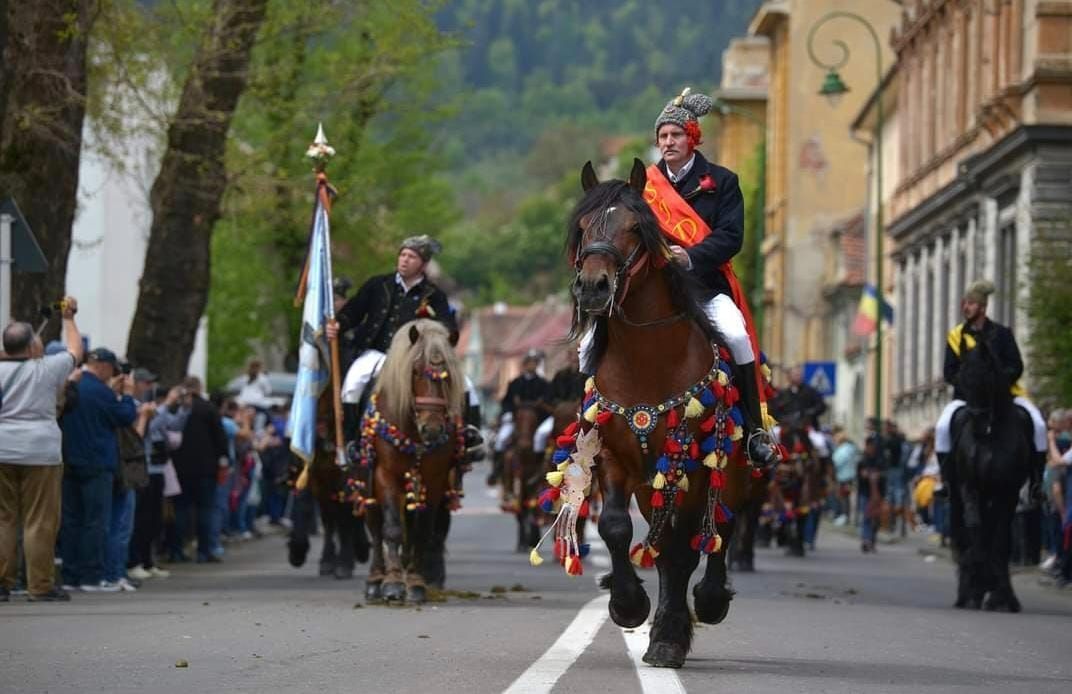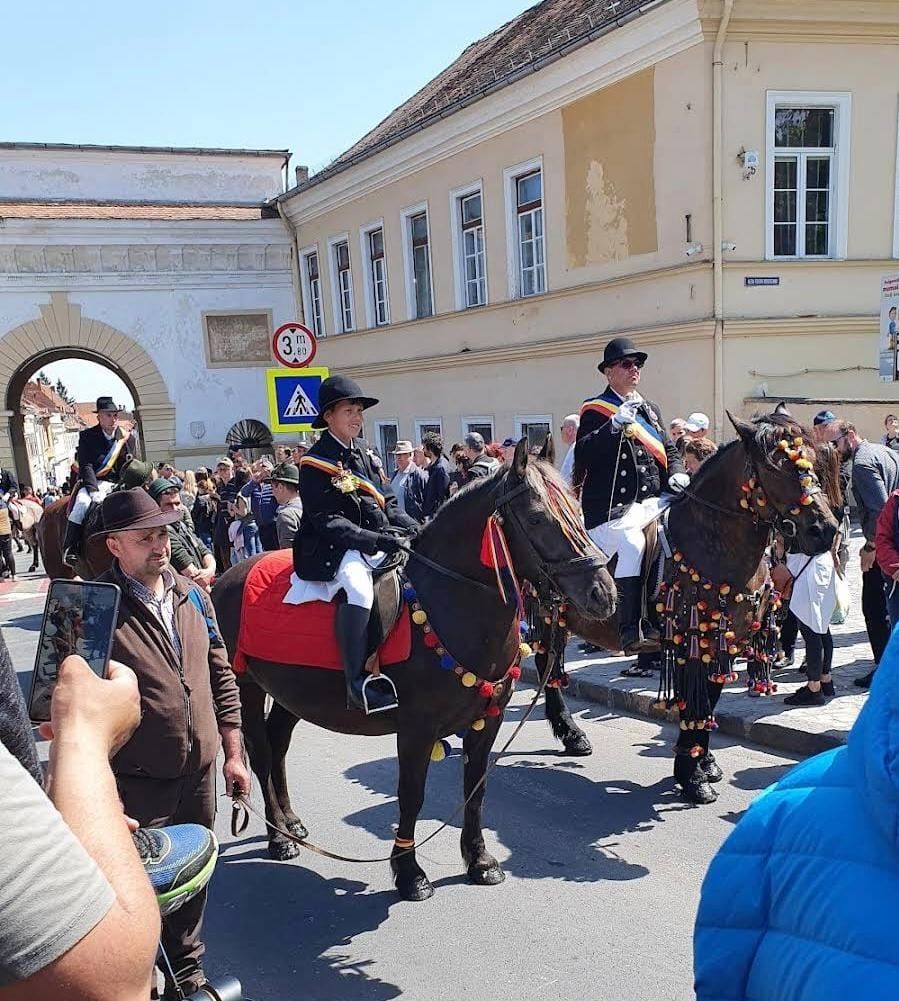
Customs and Traditions from the Brașov Area: The Junii Celebration
Every year, the city of Brașov hosts a remarkable event that attracts the attention of thousands of locals and tourists: the "Junii Brașovului" parade. This impressive parade takes place on the first Sunday after Orthodox Easter, also known as Thomas Sunday. During this spectacle, ancient traditions and customs blend with contemporary cultural expression to create an event that delights the eyes and souls of those present.
What is the Junii Parade?
Imagine this: the cobblestone streets of Brașov’s historic Șchei district, usually quiet and charming, suddenly filled with the sound of galloping horses. Men in spectacular, ornate costumes, adorned with colorful ribbons and brandishing clubs and maces, ride proudly through the city. This is the Junii Parade, a breathtaking spectacle that feels like stepping back in time.
Taking place every year on the first Sunday after Orthodox Easter, the parade is a celebration of spring, community, and ancient traditions. It’s a vibrant, living piece of history that captivates both locals and visitors alike.
A Tradition Steeped in History
The origins of the Junii are as fascinating as the parade itself. While the first documented mention dates back to 1728, many historians believe the tradition is much older, with roots in pre-Christian, Dacian rituals that celebrated the rebirth of nature in spring.
Over the centuries, this pagan festival merged with Christian traditions and evolved into a form of military and social initiation for the young men of the Șchei district. These “juni” (from the Latin for “youths”) formed a distinct military caste, tasked with defending the Romanian community that lived outside the city’s Saxon walls. The parade was their way of demonstrating their strength, skill, and readiness to protect their people.

The Seven Groups of the Junii
The Junii are not a single, uniform group. They are divided into seven distinct companies, each with its own unique costume, flag, and specific role in the parade. Seeing them all is part of the fun:
-
Junii Tineri (The Young Junii): The youngest group, typically unmarried men.
-
Junii Bătrâni (The Old Junii): The most prestigious group, comprised of married men.
-
Junii Curcani (The Turkey Junii): Known for the large turkey feathers in their hats.
-
Junii Dorobanți: Their costumes resemble 19th-century Romanian military uniforms.
-
Junii Brașovecheni: Representing the old part of Brașov.
-
Junii Roșiori: Named for their red hussar-style jackets.
-
Junii Albiori (The White Junii): Dressed predominantly in white.
Each group is led by a “vătaf” (leader), and the parade showcases the pride and identity of each company.
How to Experience the Parade
The parade follows a well-trodden route through the heart of Brașov. It traditionally begins in Piața Unirii in the Șchei district, where a priest blesses the flags of the Junii. From there, the procession moves towards the Old Town, making its way down Republicii Street to the Council Square (Piața Sfatului), before heading to the hills outside the city for traditional games and celebrations.
To get the best view, find a spot along Republicii Street or in the Council Square. The atmosphere is electric, filled with the sounds of traditional music, the cheers of the crowd, and the impressive sight of the Junii on their magnificent horses. It’s a truly unforgettable experience.



